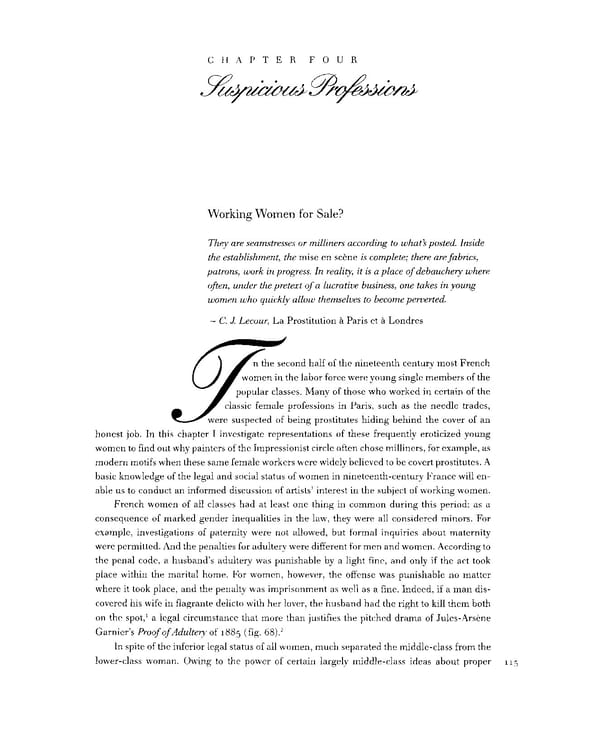CHAPTER FOUR Suspicious Professions Working Women for Sale? They are seamstresses or milliners according to what's posted. Inside the establishment, the raise en scene is complete; there are fabrics, patrons, work in progress. In reality, it is a place of debauchery where often, under the pretext of a lucrative business, one takes in young women who quickly allow themselves to become perverted. — C. J. Lecour, La Prostitution a Paris et a Londres n the second half of the nineteenth century most French women in the labor force were young single members of the popular classes. Many of those who worked in certain of the I classic female professions in Paris, such as the needle trades, were suspected of being prostitutes hiding behind the cover of an honest job. In this chapter I investigate representations of these frequently eroticized young women to find out why painters of the Impressionist circle often chose milliners, for example, as modern motifs when these same female workers were widely believed to be covert prostitutes. A basic knowledge of the legal and social status of women in nineteenth-century France will en- able us to conduct an informed discussion of artists' interest in the subject of working women. French women of all classes had at least one thing in common during this period: as a consequence of marked gender inequalities in the law, they were all considered minors. For example, investigations of paternity were not allowed, but formal inquiries about maternity were permitted. And the penalties for adultery were different for men and women. According to the penal code, a husband's adultery was punishable by a light fine, and only if the act took place within the marital home. For women, however, the offense was punishable no matter where it took place, and the penalty was imprisonment as well as a fine. Indeed, if a man dis- covered his wife in flagrante delicto with her lover, the husband had the right to kill them both on the spot,1 a legal circumstance that more than justifies the pitched drama of Jules-Arsene 2 Garnier's Proof of Adultery of 1885 (fig. 68). In spite of the inferior legal status of all women, much separated the middle-class from the lower-class woman. Owing to the power of certain largely middle-class ideas about proper US
 Prostitution & Impressionists Page 133 Page 135
Prostitution & Impressionists Page 133 Page 135